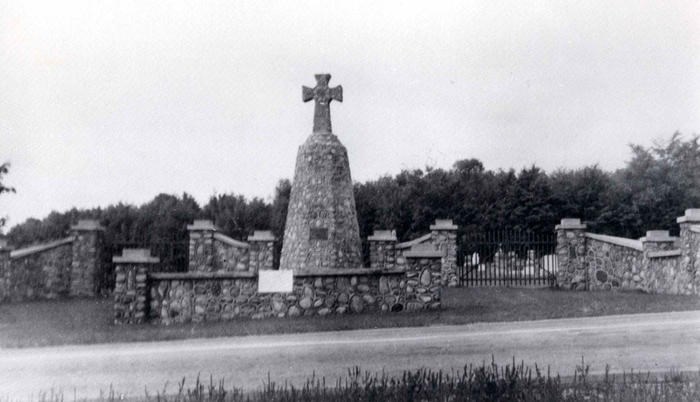Of all the unusual things that storied police officer Frank Burrard Creasy had seen in his life, the events of November 1928 in Innisfil must have counted among the strangest.
In 1928, Frank Creasy was an Ontario Provincial Police officer with the Barrie detachment. He had joined the force in 1921 and been assigned to Barrie in 1926.
Sgt. Frank Creasy was born in Ceylon, now Sri Lanka, in 1889. His grandfather, Sir Edward Shepherd Creasy, was an English lawyer, history professor and writer who had been appointed Chief Justice of Ceylon in 1860.
Sgt. Creasy’s father worked as a police officer in Ceylon and, when he retired, he brought his family back to England.
As a 21-year-old, young Frank Creasy set out for New Mexico in search of relatives who had immigrated there. Frank had ambitions of becoming an American rancher.
In 1913, Frank Creasy found his cousins, two men by the name of Masters, who were operating the first trading post in the community of Ramah. Creasy worked part-time with the Masters and part-time with neighbouring rancher, Johnny Miller.
Within a year, Frank and his new wife, Lily, had property of their own.
Soon, Frank Creasy found himself leaning toward his father’s profession and became a deputy sheriff with New Mexico's McKinley County. During that time, he was still tending to his own land and helping Johnny Miller with his horses and cattle drives.
It was around a campfire one night — after Creasy and Miller both had a few drinks — that the older rancher told the younger man a secret. His name was not Miller. He was William Bonney, also known as Billy the Kid; not dead, not killed in a gunfight by Pat Garrett, but alive, duly pardoned by the government and he had the documents to prove it.
Miller also had a good supply of gold coins some rather interesting scars on his body.
Creasy wasn’t long in New Mexico, though. The Great War began, so Frank headed north to enlist with the Canadian Expeditionary Force. It was after his military service ended that he decided to remain in Canada and make a career in law enforcement with the Ontario Provincial Police.
Before the events of 1928, Sgt. Frank Creasy’s name often appeared in the Barrie newspapers. He had arrested George O'Neil for murder, investigated the Beeton cattle-rustling case, and worked innumerable robberies, liquor offences, automobile thefts and more.
So, when the call came in, on that dark post Halloween night, reporting that the dead had risen at the Sixth Line Cemetery and were scaring the daylights out of passing motorists, Sgt. Creasy and his fellow officers must have been quite intrigued.
Let’s let the Barrie Examiner, which reported on it so well on Nov. 15, 1928, take up the story.
“Coming over the brow of the hill, just at the intersection of the Sixth Line and the highway, motorists were met with a ghostly figure robed in white and throwing a shadow among the tombstones in the cemetery.”
Off they went, Sgt. Creasy, Insp. Putnam and the fittingly named Const. Law, guns and flashlights in hand.
“Throw on your lights, boys!” Putnam commanded.
“Immediately, three flashlights revealed the white-clad figure in all its horror. The officers jumped towards it. To their surprise, it didn’t flit away into the silent night. It was solid.”
When the white sheet was torn off, a rather scared teenage girl was found to be beneath it. Right after that, a dozen more young girls dashed across the highway banging pots and pans. What on earth?
As it turned out, these were local girls who had been camping out at Big Cedar Point. They had come to the highway to meet a bus carrying girls from Toronto who were to join them at Big Cedar. This spooky prank was to be their grand welcome, but the police arrived before the bus did.
After a laugh and a lecture by Creasy and his partners, the girls vowed never to organize another haunting. The bus arrived and the gang quietly gathered up sheets and kitchen wares and departed.
The Sixth Line Cemetery has remained quiet these last 92 years.
Each week, the Barrie Historical Archive provides BarrieToday readers with a glimpse of the city’s past. This unique column features photos and stories from years gone by and is sure to appeal to the historian in each of us.


